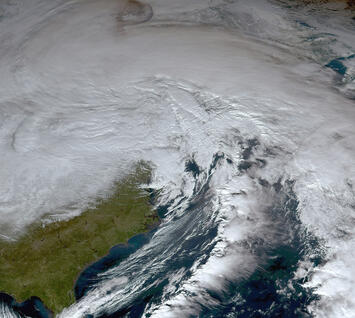
Chris Keefer, the Toronto-based physician and founder of Canadians for Nuclear Energy, calls the electric grid a “civilizational life support system.”
Keefer, of course, is correct. The most critical systems in our society — medical, water, wastewater, traffic lights, telecommunications, and lighting — depend on reliable electricity. But earlier this month, the Federal Energy Regulatory Commission and the North American Electric Reliability Corporation issued their final report on a winter storm that hammered the northeastern U.S. last year. And that report proves that our natural gas grid is just as essential as our electric grid. Indeed, FERC and NERC have repeatedly said that the two grids are intertwined, interdependent, and irreplaceable. Indeed, a reliable and resilient natural gas grid is critical to our energy security, and therefore, our national security.
Put short, policymakers ignore the importance of the gas pipeline system at our extreme peril.
In bone-dry language, the report “Inquiry into Bulk-Power System Operations During December 2022 Winter Storm Elliott,” explains how the gas pipeline network in New York nearly failed last Christmas when temperatures plummeted during the bomb cyclone. Freeze-related production declines, combined with soaring demand from power plants, homes, and businesses, led to shortages of gas throughout the Northeast. The lack of gas, as well as mechanical and electrical issues, resulted in an “unprecedented” loss of electric generation capacity totaling some 90,000 megawatts. While the lack of electricity was dangerous, the possibility of a loss of pressure in the natural gas network should send a bone-chilling shiver through the sacroiliac of every politician and bureaucrat in Washington, D.C., New York and the Northeast.
The report explains that if the gas pipeline system had failed, the recovery process in New York City would have taken “months.” In addition, the property damage due to damaged water pipes in homes and buildings would likely have caused hundreds of millions of dollars in damage.
Left unsaid in the report is that the collapse of the gas grid during the period in which temperatures in New York City stayed below freezing would have caused a calamity unlike any other in U.S. history. The cold that lasted from December 23 to December 28 could have resulted in thousands, or even tens of thousands, of deaths. The damage from burst water pipes would have rendered untold numbers of residential and office buildings in New York City unusable.
A friend who works for the federal government in Washington, D.C., and is familiar with the FERC/NERC report told me last week that the loss of gas in New York City would have required evacuating most of the people in the city. Let that soak in for a minute. New York City has roughly 8.5 million residents. Evacuating even 25% of Gotham’s residents during extreme cold would have required a herculean effort. But even assuming such an evacuation could be accomplished, imagine how the country would handle 2 million displaced New Yorkers who could not return to their homes for months. And while you’re at it, imagine if those 2 million New Yorkers had their homes soaked by broken water pipes.
In short, the U.S. narrowly averted both a humanitarian and economic crisis that could have put the country’s economy into a tailspin. Imagine America’s financial capital in such disarray that money center banks and Wall Street could not function because their office buildings didn’t have heat.
Here’s the critical section of the report, which explains that Winter Storm Elliott “greatly impacted the operations” of Consolidated Edison, the electric and gas utility that serves much of New York City. It continues:
On Christmas Eve morning, the five interstate natural gas pipelines serving Con Edison began experiencing drops in pressure at Con Edison’s citygate due to production losses and operational issues. The pressures declined precipitously and at noon, the pipelines informed Con Edison that they had exhausted their line pack and storage withdrawals, and pressures would not improve until demand decreased... Had Con Edison’s citygate pressures not recovered, it was in danger of losing pressure on, or needing to cut service to, all or large portions of its system. Even losing service to 130,000 customers would be considered a major outage and could have taken five to seven weeks to restore, depending on the availability of mutual aid. Had it lost the majority of its system, over a million customers in New York City and nearby areas would have been unable to heat their apartments and houses while the outside temperature was in the single digits...”
Read the rest of this piece at Robert Bryce Substack.
Robert Bryce is a Texas-based author, journalist, film producer, and podcaster. His articles have appeared in a myriad of publications including the Wall Street Journal, New York Times, Forbes, Time, Austin Chronicle, and Sydney Morning Herald.
Photo: NOAA satellite photo of winter storm Elliott over the east coast of the U.S., December 23, 2022 via Wikimedia in Public Domain.












